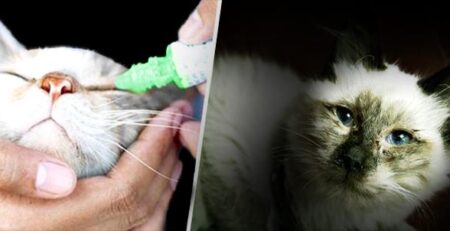Table of Contents
Cushing’s syndrome originates when the dog’s pituitary or adrenal glands malfunction and produce excessive cortisol.
It is a disease found with some frequency in dogs over 6 years of age.
Does your old dog drink a lot, pee a lot, and is always hungry? He may have developed Cushing’s syndrome.
Cushing’s syndrome originates when the dog’s pituitary or adrenal glands malfunction and produce excessive cortisol.
Cushing’s syndrome owes its name to the neurosurgeon who first identified it in 1932, Dr. Harvey Cushing.
Dr. Cushing first described this syndrome related to the presence of “abnormal cells” at the level of the pituitary gland or pituitary gland.
Pituitary and adrenal glands
The adrenal glands are two small glands located near the kidneys; the pituitary gland is a gland located inside the skull.
The pituitary gland produces ACTH, a hormone that stimulates the adrenal glands to in turn produce glucocorticoid hormones the most important of which is, indeed, cortisol.
In particular, glucocorticoids in particular have several effects: they promote the body’s response to stressful situations, increase blood sugar concentration modify bone and muscle metabolism.
For this reason, it is a syndrome that can cause very serious secondary diseases and even death of the animal if it is not properly diagnosed and adequately treated.
There are various types of Cushing’s syndrome
Cushing’s syndrome is quite common in dogs and rare in cats.
- Pituitary-dependent: this is the most common form, the cause of which is the presence of a pituitary tumor that is almost always benign.
It mainly affects older dogs with an incidence of 85%.
The pituitary gland overstimulates the adrenal glands, and they begin to produce too much cortisol.
This condition of increased adrenal glands occurs during screening.
- Surreney-dependent: a very rare form, also due to the presence of a tumor located at the level of the adrenal glands.
In this case and without the stimulus of the pituitary gland, it is the adrenal glands themselves that produce an excessive amount of cortisol.
It is usually unilateral, that is, it affects only one gland while the other gland functions normally.
- Iatrogenic: in some cases the syndrome is caused by the excessive and prolonged administration of cortisone drugs.
In this case, the syndrome is reversible and regresses with progressive reduction of the drugs that caused it.
Cushing’s syndrome is very complex and manifests with a wide range of symptoms
It usually affects usually dogs over 6 years of age, with some predilection for small animals.
Because the symptoms occur progressively, the serious mistake often made is to attribute them to the normal aging process of the dog.
The most common symptoms: lots of thirst and lots of peeing
Initially and in almost all cases of canine Cushing’s syndrome, the most common symptom is increased water consumption and significantly increased urine output (polydipsia and polyuria).
And again, these symptoms are also associated with:
- increased appetite
- abdominal bloating
- urinary tract infections
- blindness
- Fatigue and reluctance to exercise
- muscular atrophy
- dermatitis and thinning of the skin
- hair loss
Especially hair loss (canine alopecia), which usually starts in the elbow areas, continues along the sides and abdomen, is one of the reasons why owners consult the Veterinarian.
The diagnosis of Cushing’s syndrome
It is carried out by combining clinical signs with changes in blood, urine and imaging tests (abdominal ultrasound, CT and MRI scans) and some endocrine tests.
Surgical or drug treatment?
In human medicine, the therapy of choice in the case of pituitary tumors is surgical removal of the neoplastic portion of the gland.
In contrast, in the dog, to be sure of completely removing the tumor, it is necessary to remove the pituitary gland in its entirety.
Be that as it may, pre- and post-operative management is particularly complex, and complications including neurological ones are not excluded.
Therefore, in almost all cases, the Veterinarian advocates pharmacological treatment involving the administration of specific drugs aimed at reducing cortisol production.
This treatment should be prolonged throughout the life of the animal, which should be checked regularly.
Regular periodic checkups, in fact, allow the Veterinarian to monitor the amount of cortisol produced and recalibrate therapy if necessary.
At our facility you can plan your dog’s checkups from puppyhood and schedule them on a regular basis.
And again, remember that in case of need and urgency, the Veterinary Doctors on our Staff are always available: Clinica La Veterinaria is open daily h24 including holidays and with First Aid service from 8 pm to 8 am.
For the joy of seeing them HAPPY.











